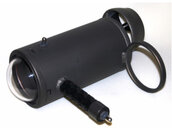Hi Guys,
I'm working on a prototype for a new type of DPV, not completely targeted at the Scuba crowd, but figured it may definitely be of interest to you guys.
The basic concept is a DPV that is light-weight, and strapped onto the fore-arm. It will only have a short battery life (think 15-20 minutes), but will allow for high-speed underwater travel. I have quite a bit of experience with electric motors .etc, and believe I can surpass everything that is currently on the market in terms of sheer power, and also keep it compact in size.
It will have 40nM of torque, which is approximately double that of the SeaBob Cayago F7, and theoretically should be able to get up to near 25mph underwater; in theory the user should be able to gain enough speed to leap out of the water like a dolphin does, which means ultimately I will be targeting the daredevil extreme-sports crowd.
My question is - would anybody be interested in a device like this if it were reasonably priced? (i.e. 1-2k)
Any feedback or suggestions would be much appreciated. I realise it's not completely suited to the scuba crowd, but you guys certainly seem to know a lot about DPV's, so I really appreciate any input you may have
- JC
I'm working on a prototype for a new type of DPV, not completely targeted at the Scuba crowd, but figured it may definitely be of interest to you guys.
The basic concept is a DPV that is light-weight, and strapped onto the fore-arm. It will only have a short battery life (think 15-20 minutes), but will allow for high-speed underwater travel. I have quite a bit of experience with electric motors .etc, and believe I can surpass everything that is currently on the market in terms of sheer power, and also keep it compact in size.
It will have 40nM of torque, which is approximately double that of the SeaBob Cayago F7, and theoretically should be able to get up to near 25mph underwater; in theory the user should be able to gain enough speed to leap out of the water like a dolphin does, which means ultimately I will be targeting the daredevil extreme-sports crowd.
My question is - would anybody be interested in a device like this if it were reasonably priced? (i.e. 1-2k)
Any feedback or suggestions would be much appreciated. I realise it's not completely suited to the scuba crowd, but you guys certainly seem to know a lot about DPV's, so I really appreciate any input you may have
- JC





